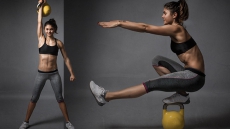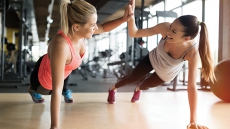Simple ways for the elderly to avoid injury while getting a good workout
Exercise is great for people of every age, but it can be especially beneficial to senior citizens. Seniors who get consistent exercise live longer, fall less and experience less injuries, have better bone density, reduce their risk of heart attack and stroke, decrease their risk of dementia, and tend to live longer, more capable lives in general.
With this in mind, let’s take a look at a few recommendations for older adults who are interested in keeping fit. These tips will not only help you get in a good workout, but will decrease your chances of experiencing injury while you’re at it.

Always be sure to stretch.
Stretching before and after a workout helps to not only improve your flexibility and mobility while you’re engaged in exercise (thereby making it more effective), but makes it less likely that you’ll experience strains and other injuries. Make a few minutes of stretching part of your pre- and post-workout routine, or better yet, take up yoga.
Find low impact aerobic activities.
One key aspect of an effective fitness regimen involves engaging in some form of aerobic exercise that will increase your heart-rate and improve the health of your cardiovascular system. In order to avoid injury, it’s advisable that you perform a low impact activity that won’t injure your joints. These can include walking, cycling, swimming and water aerobics, tai chi, dancing, and a variety of other options.

Build strength through resistance.
Experts recommend that people 65 and older receive some form of resistance strength training at least twice a week. The most straightforward way to accomplish this is through the use of fundamental bodyweight exercises like squats, lunges, and modified pushups (pushups that are performed leaned against the wall rather than on the floor). Or find a lighter dumbbell weight that works for you, and perfect workouts such as bicep curls, chest presses, and triceps extensions. Another great option is to get a set of rubber resistance bands, which allow you to perform a range of low-impact strength exercises.

Be seen.
If you prefer to head out for a walk during the early morning or later at night when it’s dark out, be sure to wear bright colours or some sort of reflector. This will ensure that you can be seen by drivers and cyclists and decrease the probability of an accident.
Don’t overdo the weight.
It can be easy to let your ego get the best of you and to try to lift more than you can. This has two negative consequences. Not only does it increase your risk of injury, but it makes your workout less effective by limiting your ability to perform the motion correctly. Be sure to choose weights that you can manage safely. Even a one or two pound dumbbell will do.

Stay hydrated.
Proper hydration is essential for people of any age. Be sure that you drink water before, during, and after a workout to ensure that you don’t become dehydrated, which can lead to a number of issues, such as muscle cramps.
Be mindful of the temperature.
It’s always nice to head outdoors and get in a good workout on a hot day, but pay close attention to the temperature to make sure you don’t end up getting too hot and suffer from heatstroke. That goes for cold weather too. If the temperature outside is excessively hot or cold, be sure to dress accordingly, or keep your workout indoors.





